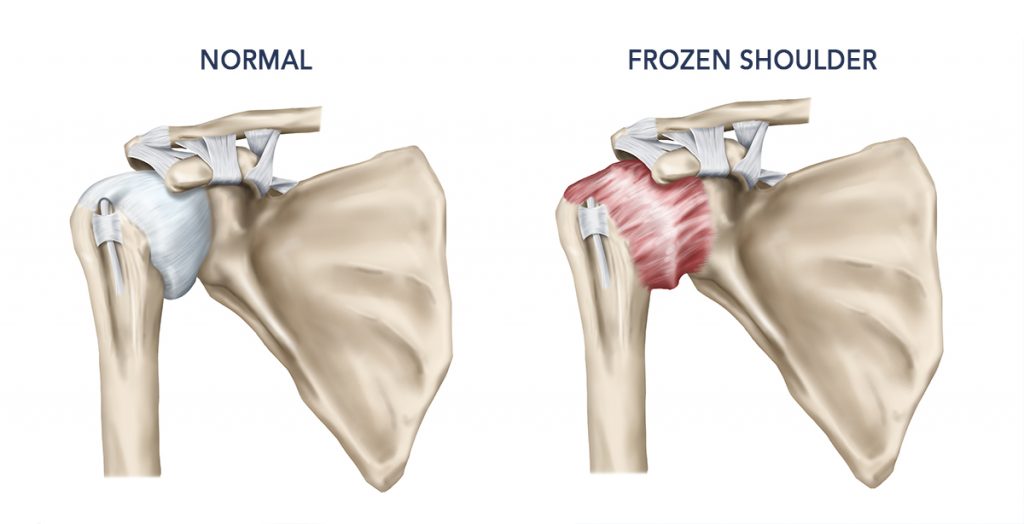Frozen shoulder or Adhesive Capsulitis is a disorder of the shoulder joint characterized by pain and restricted range of motion. It typically presents in individuals between 40 and 65 years old and affects slightly more women than men.
Frozen shoulder can be broken into three phases, named after the appearance of the joint capsule if viewed arthroscopically: red, pink, and white.
During the freezing phase we see a gradual increase in pain levels with movement, although the range of motion of the joint is usually maintained. As the inner layer of the joint capsule becomes inflamed and red, it is common to develop pain at night which is often described as a throbbing sensation.
In the pink phase of frozen shoulder, we see a progressive restriction of movement in the shoulder, as the joint capsule starts to develop small adhesions. Typically pain levels at night have either plateaued or started to decrease as the inflammation within the shoulder starts to come down.
The final stage is characterized by severe restriction of range, as the joint capsule has now developed thick adhesions. Arthroscopically viewed the capsule no longer displays such prominent inflammation and this phase is named for the white appearance of the adhesions.
The whole process can take anywhere from a few months up to two years in more severe cases.


